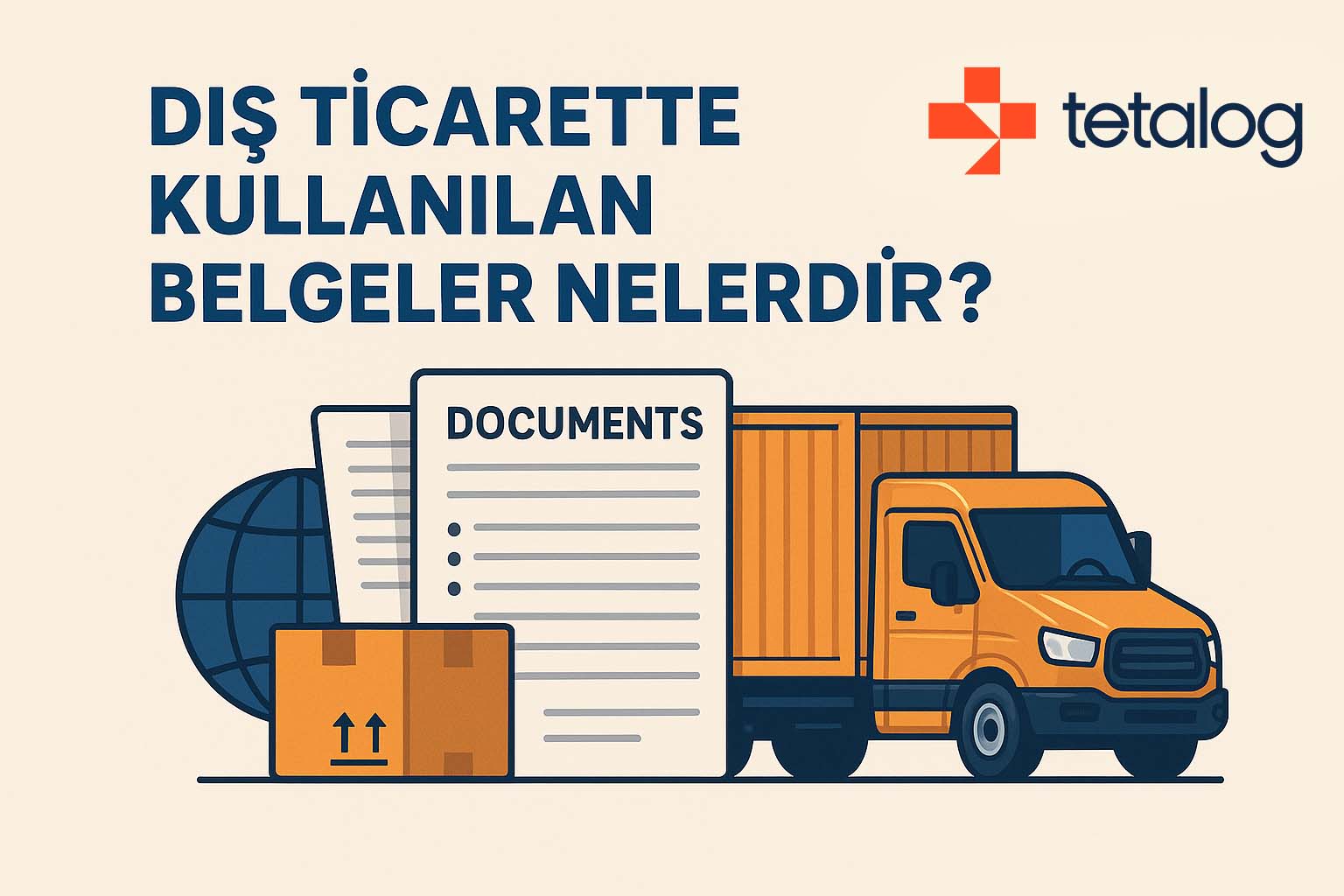
Foreign trade forms the basis of the exchange of goods and services between countries. However, this process is not limited to the shipment of goods; specific documents must be prepared, checked and presented in accordance with international standards at every stage. The documents used in foreign trade provide legal certainty in both export and import transactions, while preventing commercial disputes.
The Importance of Documents Used in Foreign Trade
Documentation in international trade ensures that transactions are transparent, secure and traceable. Within the complex structure of foreign trade, these documents play a critical role for both exporters and importers. Each document contains important information such as the origin, quality, quantity, price, mode of transport and delivery terms of the product. This information contributes to the correct execution of commercial transactions.
Documenting the relationship between the exporter and importer increases trust between the parties. Documents prevent potential disputes by ensuring that both parties fulfil their obligations. This allows trade to be conducted in a healthy manner.
Commercial documents are also of great importance in terms of facilitating payment processes and speeding up customs procedures. With accurate and complete documents, customs officials can evaluate transactions more quickly. This provides advantages in terms of both time and cost. The importance of documents in foreign trade cannot be overlooked in terms of the efficiency and reliability of trade.
Most Commonly Used Foreign Trade Documents
Commercial documents are all written records that support the financial, legal and logistical aspects of export and import processes. The most common commercial documents are as follows:
- Commercial invoice
- List of cheques
- Transport documents
- Insurance policy
- Certificate of origin
- Customs declaration
- Specification document
Invoice
The invoice is the most fundamental document certifying that the exporter has sold the goods. This document, which plays a critical role in international trade, officially records the commercial transaction between the buyer and seller. Details such as the price of the goods, delivery terms, payment method and currency are included in this document. Furthermore, the invoice is used as a legal basis for customs procedures, tax calculations, and accounting records. A correctly prepared invoice helps prevent commercial disputes and ensures the smooth progress of the export process.
Packing List
A packing list is an important document used in international trade. It shows the packaging details, number of boxes and weights of the goods. This detailed document provides a complete description of the shipment contents. It creates transparency in export and import transactions by providing a full inventory of the goods. It facilitates load control for customs officers. It also helps buyers verify the contents upon delivery. You can find more information in our blog post titled "What is a Packing List? How is it prepared?"
Certificate of Origin
The Certificate of Origin is an important document used in international trade. It proves which country the product was manufactured in. This certificate, obtained by exporters from chambers of commerce, officially certifies the origin of goods. The document plays a major role in determining customs duties for exports to certain countries. It is also required to benefit from preferential trade agreements and provides reliable information about the origin of products. Certificates of origin facilitate international trade by providing transparency regarding the place of manufacture of products and increase confidence in commercial transactions.
Transport Documents
Transport documents are official papers that certify the shipment of goods in international trade. These documents vary depending on the mode of transport. For example, a Bill of Lading is used for sea transport, a CMR document for road transport, and an Airway Bill for air transport. Each document contains details of the goods being transported, information about the sender and recipient, and defines legal responsibilities.
Insurance Policy
An insurance policy covers damages that may occur during transport. This document is a legal contract that covers damage, loss or delays that may occur during the shipment of goods. It is particularly important in sea, air and land transport. It is one of the most effective ways to reduce risk in international transport. Companies can ensure their financial security with these policies, enabling them to conduct their commercial activities more safely.
Specification
An important question arises here: What is a specification? A specification is a document that outlines the technical characteristics, quality standards, production tolerances, and usage details of a product. It is particularly used for products with distinct technical characteristics, such as industrial goods, chemicals, or foodstuffs. In short, a specification is a quality commitment that clearly shows the buyer exactly what the product is and under what conditions it was manufactured. It prevents potential disputes regarding product quality in foreign trade.
The Difference Between Specifications and Commercial Documents
Many people wonder whether a specification is a commercial document or a technical document. In fact, a specification is a complementary document that provides technical support to commercial documents. While commercial documents (invoices, bills of lading, certificates of origin, etc.) manage the financial and legal process, specifications guarantee the technical accuracy of the product. Therefore, a specification is a document used in foreign trade that has high technical validity but does not have the nature of a financial document. Unlike commercial documents, a specification details the technical characteristics of the product, such as its quality, dimensions, and materials. This provides a clear understanding between the buyer and seller regarding how the product will be manufactured and which standards must be met. The difference between specifications and commercial documents is that one is geared towards financial and legal processes, while the other provides technical accuracy and detail. These two types of documents complement each other at every stage of trade, making transaction processes more efficient.
You can find out more by visiting our International Transport Authorisation Certificates page!
Digitisation of Documents in Foreign Trade
Today, the transition of foreign trade processes to digital platforms has facilitated the preparation and sharing of documents in electronic format. This transformation enables faster trade and more efficient transactions. Documents signed with e-signatures and digital certificates save time while minimising the margin for error. Transaction processes are now conducted more securely and quickly. Digitalisation is not limited to the signing of documents, but also provides significant convenience in the storage and access of documents. Many countries now accept even technical documents such as specifications through online systems. This helps businesses to participate more effectively in international markets. The digitisation of documents in foreign trade is a process that is becoming increasingly important with the globalisation of trade. With this transformation, businesses are both reducing their costs and gaining a competitive advantage. Thanks to digital documents, information sharing is accelerating and processes are becoming more transparent.
Who prepares the specification document?
It is usually prepared by the manufacturer or exporter. Product specifications, quality standards and production details are clearly stated in this document.
Can exports be made without specifications?
It is possible for some product groups, but exporting without specifications in sectors where technical characteristics are critical is both risky and professionally inadequate.
Are digital documents legally valid?
Yes, e-signed documents are legally accepted in many countries. This method provides speed and security in foreign trade transactions.
What should be the language of commercial documents?
English is generally preferred in international trade. However, bilingual documents (e.g. Turkish–English) can be prepared at the request of the other party.






